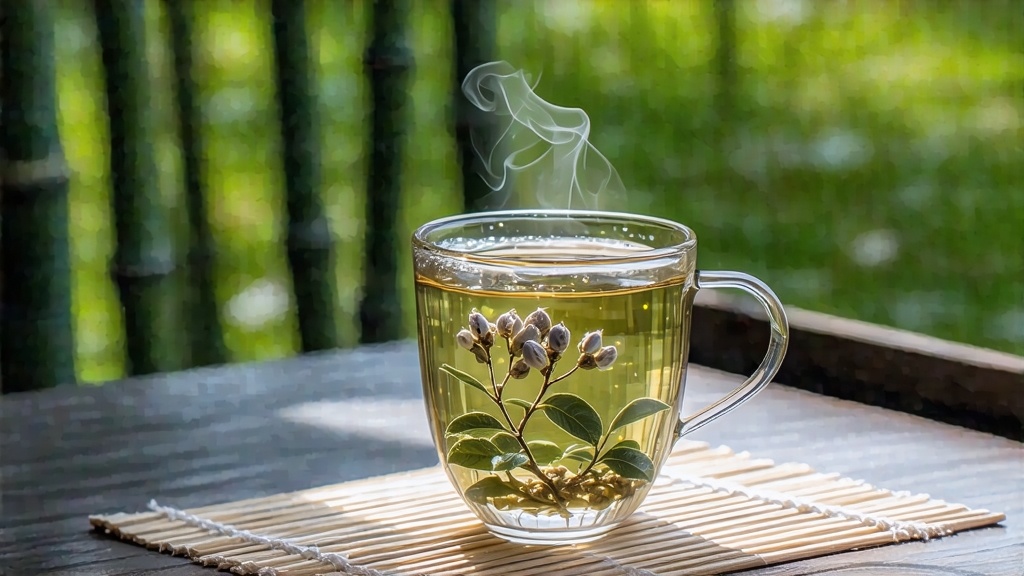
If green tea is the exuberant youth of Chinese camellia sinensis and pu-erh its contemplative elder, white tea is the whispered secret between them—an unforced whisper that carries, nonetheless, the full chronicle of a leaf’s life. Among the sparse family of true white teas, none is more coveted or more misunderstood than Fuding Silver Needle, Bai Hao Yin Zhen in its homeland. To the uninitiated it looks almost comically simple: a glass jar of downy, pale spears that might be mistaken for miniature paintbrushes. Yet coax those spears into hot water and they release a liqueur so gentle it seems lit from within, a moonlit liquor that tastes of fresh lychee, mountain spring stone, and the vanishing sweetness of childhood memories.
The history of Silver Needle is inseparable from the granite hills and sea-misted valleys of Fuding, a coastal county in northeastern Fujian where the earliest written record of “white tea” appears in a Song-dynasty treatise on tribute teas (1082 CE). Imperial tastemakers prized the down-covered buds for their “cooling” properties, shipping them northward to soothe the febrile thirst of emperors. For eight centuries the tea remained a courtly curiosity, produced in such small quantities that locals reserved it for dowries and ancestral offerings. Only in the late nineteenth century, when European botanists traced the source of those mysterious “white hairs” to the Da Bai cultivar, did Silver Needle begin its slow voyage abroad—first to Victorian London apothecaries, later to Russian tea clubs, and finally to the specialty menus of twenty-first-century cafés from Melbourne to Montreal.
Botanically, the magic begins with two cultivars almost unique to Fuding: Da Bai (Big White) and its even more pubescent sibling Da Hao (Big Hair). Their buds swell to an uncommon girth, storing amino acids and polyphenols behind a velvet overcoat of protective trichomes. Those trichomes—visible under a loupe as tiny silver hooks—are the first clue to quality: the denser the fuzz, the higher the concentration of protective catechins and the more luminous the cup. Unlike green-tea plucking standards that prize the “one bud, two leaves” symmetry, Silver Needle demands only the unopened spear, plucked within a 48-hour window in early March when the bud’s length hovers between 2.5 and 3 centimeters. Experienced pickers work barefoot on dew-cooled terraces so as not to bruise the tender tissue; a single kilo of finished tea requires roughly thirty thousand buds, all gathered before the mountain fog lifts.
The craft that follows is disarmingly minimal yet fiercely precise. Once back at the farmhouse, the buds are spread in paper-thin layers on bamboo trays and left to wither for thirty-six to forty-eight hours. No pan-firing, no rolling, no shaking—only the slow choreography of air, moisture, and enzymatic time. The ambient humidity must hover between 65 and 70 percent; too dry and the buds oxidize unevenly, too moist and they sour. Master witherers read the weather like sailors, shifting trays from sun-warmed corridors to shaded alcoves every half hour. When the bud’s moisture drops to 10 percent, a final desiccation in charcoal-heated ovens—never above 40 °C—locks in the signature flavor. The entire process is less manufacturing than meditation: a refusal to impose, a willingness to listen.
Western drinkers often expect white tea to be caffeine-light; Silver Needle politely upends that assumption. Because the bud is the plant’s most energetically active tissue, an 8-ounce cup can deliver 30–40 mg of caffeine, comparable to a delicate green. Yet the sensation is radically different: the amino acid theanine, abundant in those downy hairs, smooths the stimulant’s edges into a sustained, luminous focus—what Chinese poets call “clear-minded drowsiness.”
To brew Silver Needle respectfully, abandon the teabag reflex. The leaf wants space, time, and coolish water. A gaiwan or small glass teapot allows sideways expansion; 5 grams of buds (about two heaping teaspoons) suffices for 150 milliliters. Bring spring water to 80 °C—just below the first string of pearls—and pour in a high, thin stream so the buds tumble like confetti